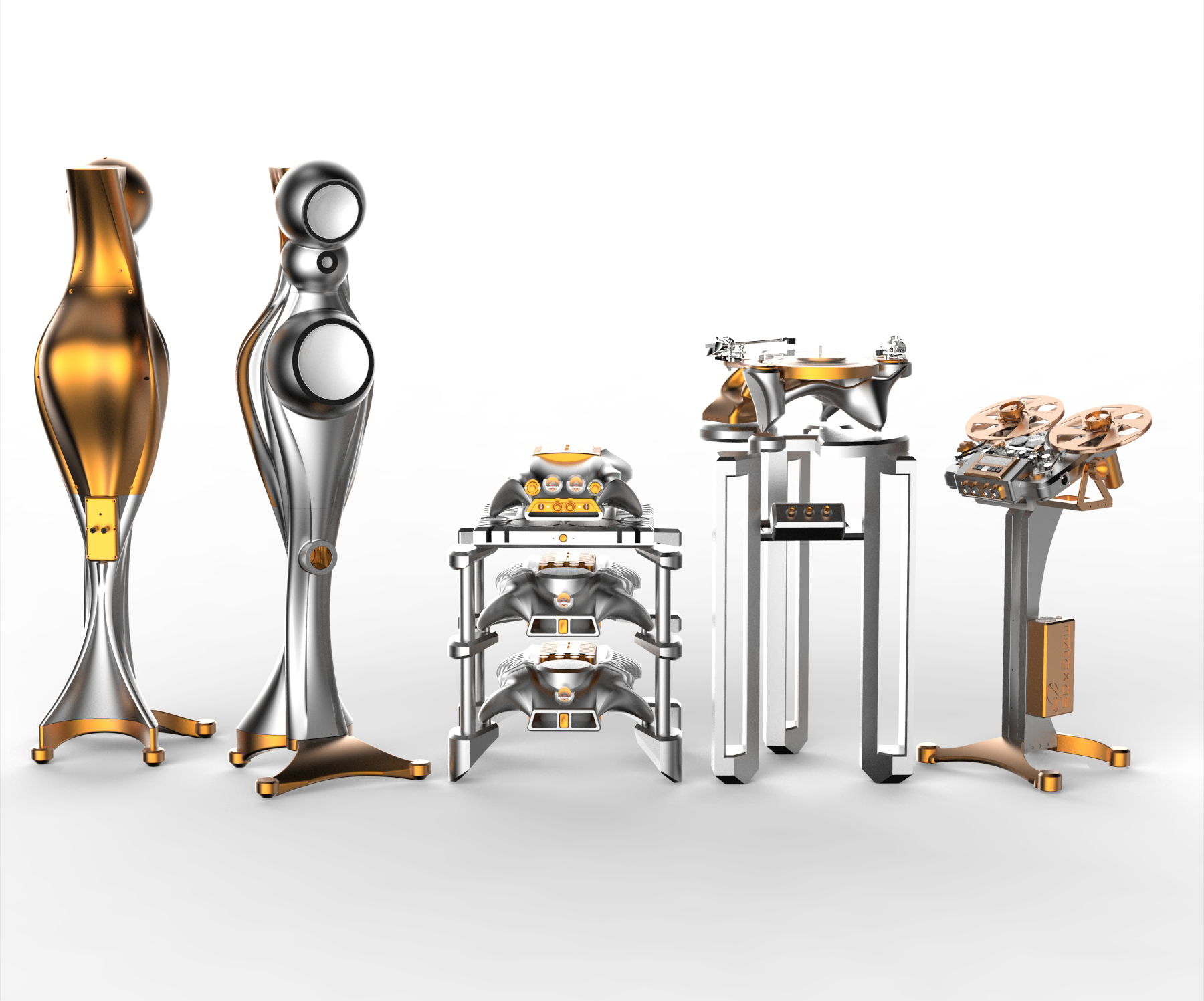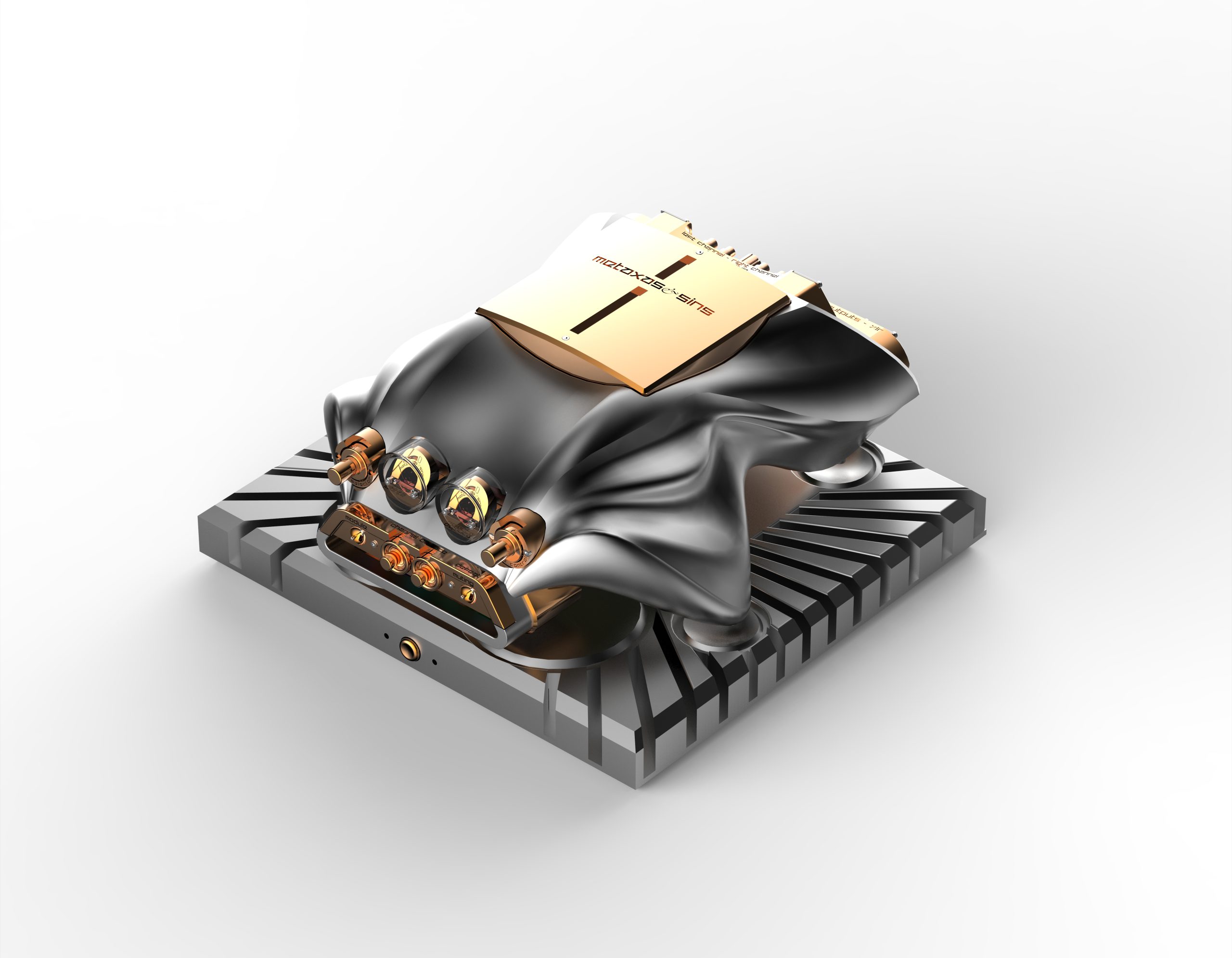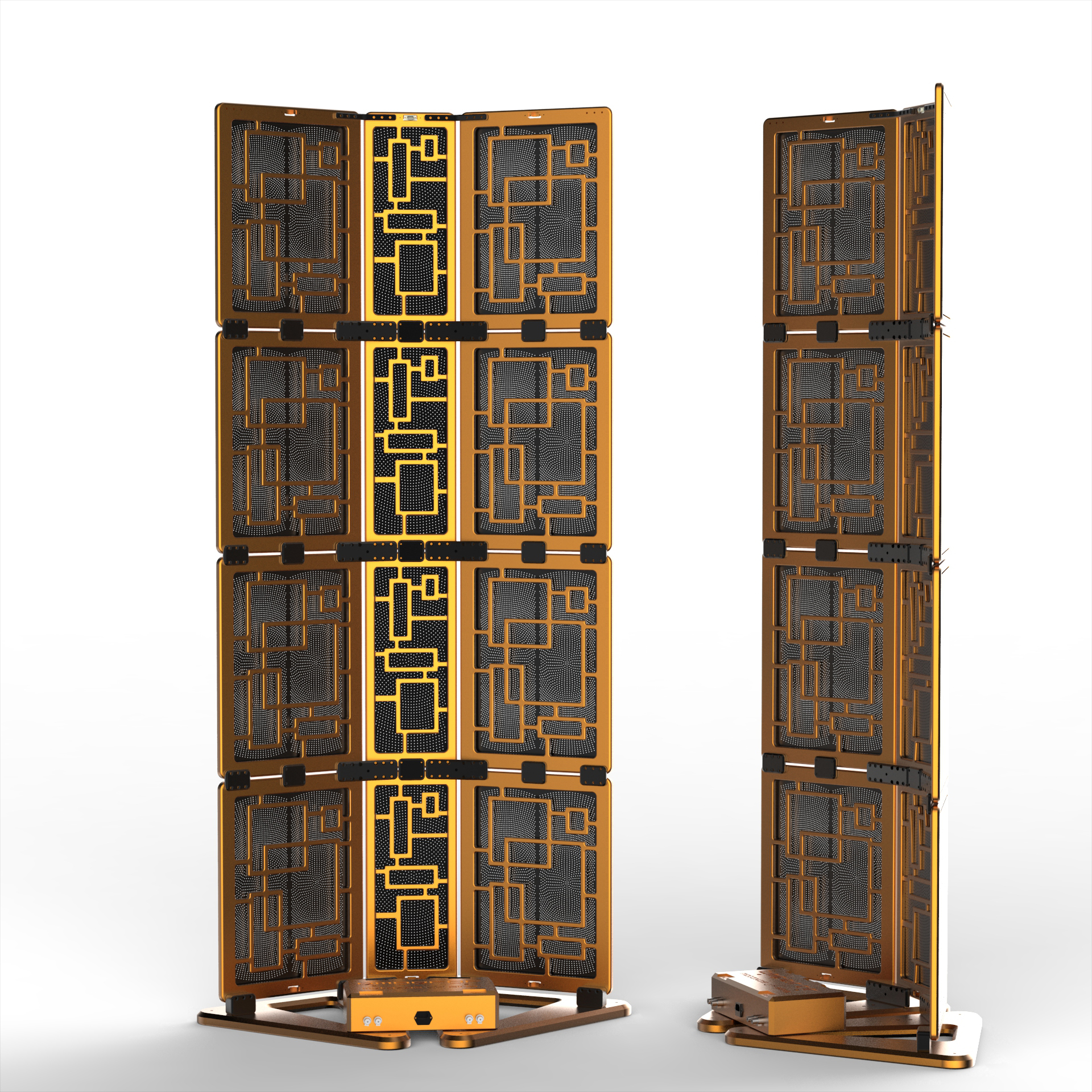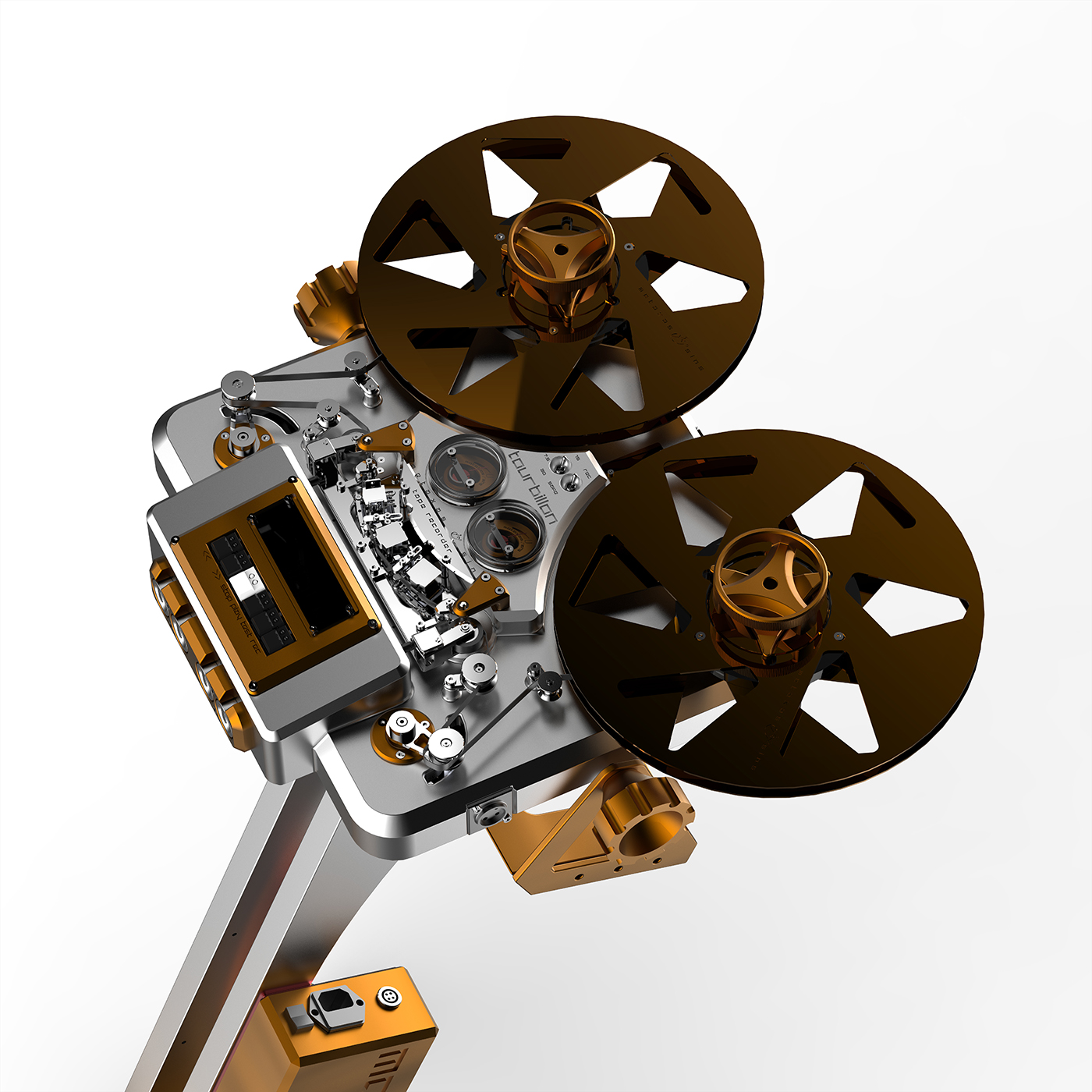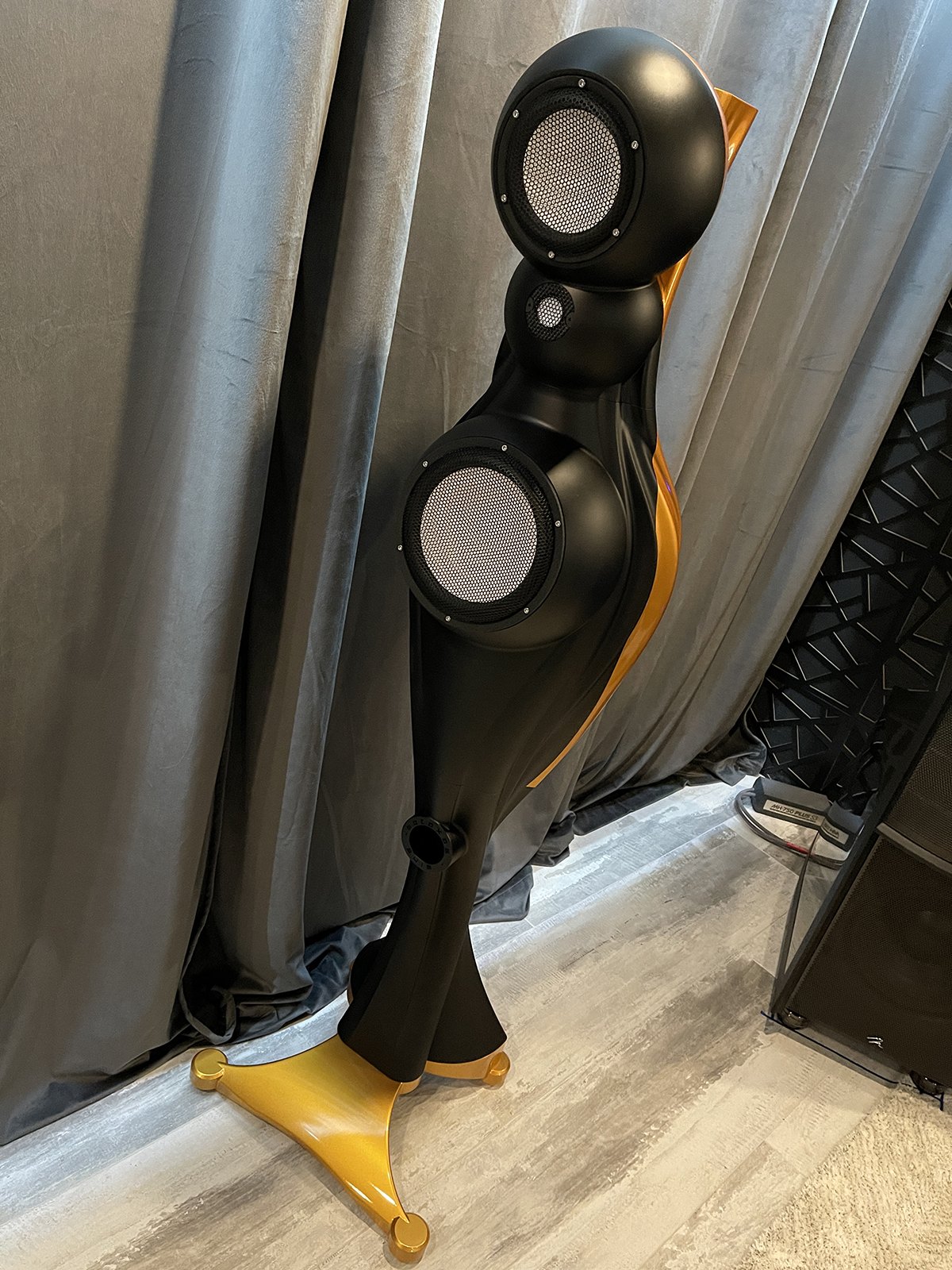To do this, it needs to elevate itself from the realm of only electronic engineering and be emphasized through the aesthetic to find a wider mainstream appeal. Otherwise, as one of my colleagues in the industry has often expressed to me, our generation of engineering creatives will die with their customers.
With almost 50 years of work dabbling in high-end audio, from the design and manufacturing of entire playback systems to the recording of hundreds of concerts to gain further musical insights, the last thing that I wanted to produce with my recent collection was another box with speaker drivers or a large heatsink bolted to it. I was dreaming of spectacular architecture, design, and sculpture that I had experienced and wanted to bring that emotional intensity, daring, and seductive beauty to high-end audio. From the sensual, organic, and striking casework [inspired by the stunning work in Sports cars of the 1950s/60s of Ercole Spada, Pininfarina as well as the architecture of Hadid, Gehry, and Calatrava] extending to absolutely every component in a complete system.
As a recording engineer, I also wanted to “voice it” for extremely realistic recording playback, to be able to easily reproduce and transmit all the “dopamine-induced” nuance and emotion of a musical performance because the ear has always been the most critical of our senses for our survival – so much so, that it has absolutely no filtering and is directly wired to the brain. Our other senses – the eye, for example, interpret stimuli through a huge filter of years of educational learning. This is why serious audiophiles can agree on what sounds best, but not on aesthetics.
So how should a designer approach the aesthetics of a Hi-Fi object?
Traditionally, this was done by carefully studying the existing marketplace, identifying the most successful products, and essentially borrowing elements from them to create a new and improved version. Sadly, this has ultimately led to the thousands of identical-looking products out there.
When I first started my company to produce Hi-Fi in 1981, I was acutely aware that I myself had no clue how to approach design, so in a very Socratic manner, I asked myself how would I learn to be a designer. The simple answer was to ask great designers in many fields of the creative arts how they approached their work. So, my parallel career was publishing a magazine on design and then a TV show on design [ikon.tv/dvd].
Secrets Sponsor
Let me share some of my findings.
The late jeweler Stefan Hafner would say that design is the ability to make a straight line sing. Architect Glenn Murcutt would say that design is a process, a journey. When asked, Andrée Putman told me she was an explorer. Romeo Gigli added that every designer has peaks of creative energy, which quickly [through media] stimulate and challenge their peers. They are then re-energized when their peers come up with something even more spectacular. Great design is a combination of all those things. Inspiration can come from anywhere. But mostly it’s the mind slowly weaving through ideas until they become interesting enough to become real objects.
Pierre Cardin told me you also need to be as good a lawyer, marketer, accountant, and press agent as you are a designer, otherwise, you won’t succeed. These sentiments were echoed by Willy Bogner who also added that you need to be able to deal with failure. And be able to move on. When I interviewed Frank Gehry in the early 1990s [just before his critical career success], he was seriously thinking about moving to Australia to teach! Thankfully he didn’t. In general, you need to be savvy about every aspect of the business. It’s not enough to be “just” a good designer.
Closest to [and incorporating] Hi-Fi, the automotive industry probably has the greatest influence on mainstream technical design and styling. When chatting to Ercole Spada, designer of many of the classic cars of his era [Zagato, Aston Martin, BMW, and Alfa Romeo] he was quite clear about the importance of Zeitgeist – and that some of his designs weren’t accepted because they were too ahead of their time. Ironically, in those days, the birth of a new model took around 6-8 years, so you had to be no more than 10 years ahead of the current design stylings to be commercial.
In the Antique Furniture trade, I asked Jean-Michel Rossi of Aveline Antiques in Paris how he picked his inventory. He replied that the most valuable furniture objects looked like they were from an era 50+ years later than from when they were created. They were well ahead of their time.
Of course, the best example of being ahead of his time [and to his detriment] was Vincent van Gogh…who offered thickly painted abstracts in a time when the norm was almost picture-postcard images painted by Dutch Masters of scenes from the daily lifestyle.
Nowadays, the notion of time and trend [Zeitgeist] is quite blurred. Everything is in and out of fashion at the same time. Design has gone through an almost ADD transition. It’s both an exciting and daunting time for creatives and many great ideas have already been lost in the noise of Tik Tok…
I’ll try to explain how I developed an idea for Hi-Fi using some of the objects I’ve already created as examples. My current collection actually evolved from the unusual, organic shape of a chaise lounge I created for an Italian furniture maker.
Tape Recorders
As a card-carrying recording Engineer, I was using the Swiss Stellavox machines for almost 40 years [purchased at the factory in Hauterive, Switzerland in the mid-1980s]. The hundreds of concerts and music festivals I’ve recorded with them informed how I would develop my 3 recorders “practically”, but aesthetically I wanted to explore many new groundbreaking ideas.
The tape playback head is remarkably similar to a moving coil cartridge in inductive construction. So, you can quite easily offer up to three separate “playback heads” – similar to a turntable with three tonearms. The Tape Preamp is a simpler version of the Phono RIAA preamplifier. Contrary to what is believed, the best-sounding tape recorder for Playback is not a “Recorder” which adds another level of unnecessary notch filtering [bias frequency at 150kHz] and extra Erase/Record heads for the tape to scrape across for no reason.
Unlike every other Tape Recorder, I decided to display the kinetic art-like rolling platform, rather than hide it – similar to horology where they show you the movement. The Tourbillon needed to be as compact as possible to still be of use as a “location recorder” for my concert work. The Papillon, on the other hand, being a studio recorder, I could really take it to wherever it needed to go. This explains the “butterfly shape” [also in the heads] and the organic sweeps to minimize resonances from a square box construction. I was able to sculpt the shapes that followed the tape path – to be like a suspended rail system that allowed you to take in all the beautiful mechanical kinetic motion. Watch the machine dance when you press PLAY.
I’m currently working on the Squelette, which adds another technical feature – pinch-roller-less tape handling made famous by the ATR 100 [Ampex], but in this case, taken to an aesthetic extreme. Still figuring this one out.
Secrets Sponsor
Speakers
The Siren speakers were a real breakthrough in the CNC machining of aluminum into an organic form. I wanted to minimize the wall thickness but maximize its stiffness at the same time which led me to the sweeping organic shapes that have almost “folds” which stiffen the overall structure. The organic form allows me to avoid any internal structural supports that would otherwise be necessary. So, despite having the curves of a beautiful woman, it ticked all the engineering boxes.
Turntables
Again, I wanted to use organic shapes to dissipate unwanted micro-resonances as well as draw from almost a century of engineering in terms of bearing designs and incorporate the use of titanium for the tonearm [which I’m currently exploring using 3D titanium printers!]. Even the platter is a two-part acrylic top over aluminum which has an undulated decreasing waves interface. The whole is a very calculated engineering extravaganza yet presented in a beautiful organic sculpture.
Headphone Amplifier
Here is my “crossover” idea between generations. After consulting with my sons, it became quite evident that their tastes for a system are quite personal rather than room enveloping and so the Ethereal was born.
What tickles me most about Hi-End Audio, is that it hasn’t already been “overmined” creatively like many of the other applied arts of horology, automobiles, furniture, fashion, jewelry, and others. There is so much more that can be done to push the boundaries of technology, innovation, and aesthetics that is in the service of great music.
ABOUT:
Meet Mr. Kostas Metaxas, an award-winning artist and audio designer, electrical and recording engineer, Magazine Editor/Publisher, and a Filmmaker/Broadcast Producer who covers fashion, design, gastronomy, and the arts with over 1000 documentary interviews and two awarded feature films [ikon.tv] to his credit.
Drawn to the shapes and textures of old master painters and sculptors since he was a teenager, at about the same time, he was introduced to Hi-End Hi-Fi equipment and fell in love with the art of the reproduction of music. To him, art and design are “visual music”. Unable to afford expensive Hi-Fi equipment, he taught himself electrical engineering and started producing, which turned into his first business.
Hungry for knowledge about art and design, Metaxas started a magazine so he could interview great artists and designers worldwide, learn from them, and feed his own creativity.
For Metaxas, designing feels euphoric. He enjoys working with materials – metal, glass, ceramic, plastic, and subverting technology, like using dental techniques to create jewelry and watches. Both the traditional manufacturing methods and the latest software or their combination work great for him. He thinks of the big picture first, then the details and the best methods to create them.
He strongly believes in balance with a twist, in the fight between chaos and order, with a little intrigue thrown in. A bit of theatre, a bit of utility – there needs to be substance, it should be useful, and it should also invoke experimentation and playfulness with infinite possibilities.
Some advice from Metaxas to young designers: “Research the breathtaking work of others, and wait until your idea exceeds that standard, otherwise it has no reason to exist. Do your absolute best. If you’re not motivated, don’t do it. Give life to an object which never existed before”.
That’s what he’s doing, and he loves every moment of it.




